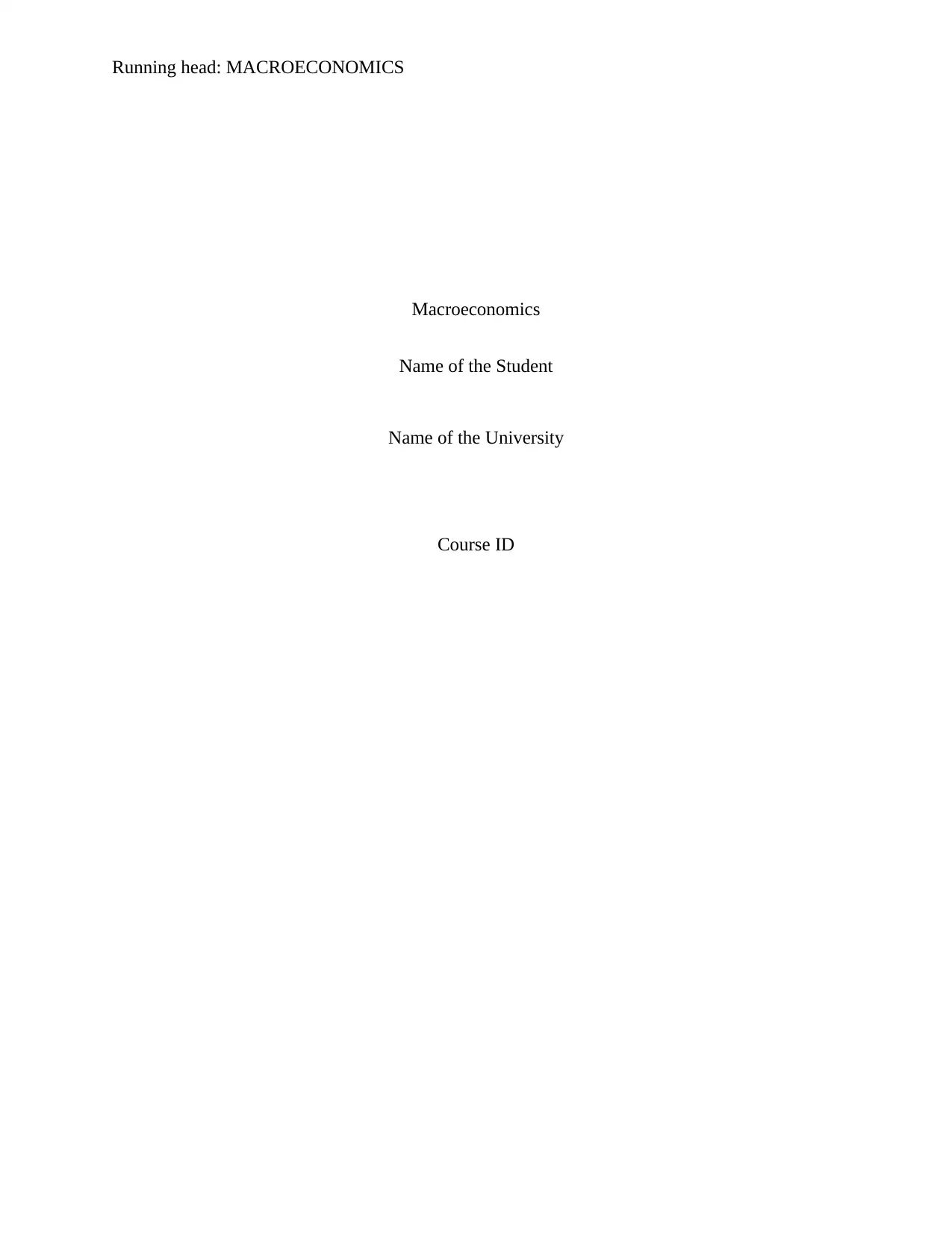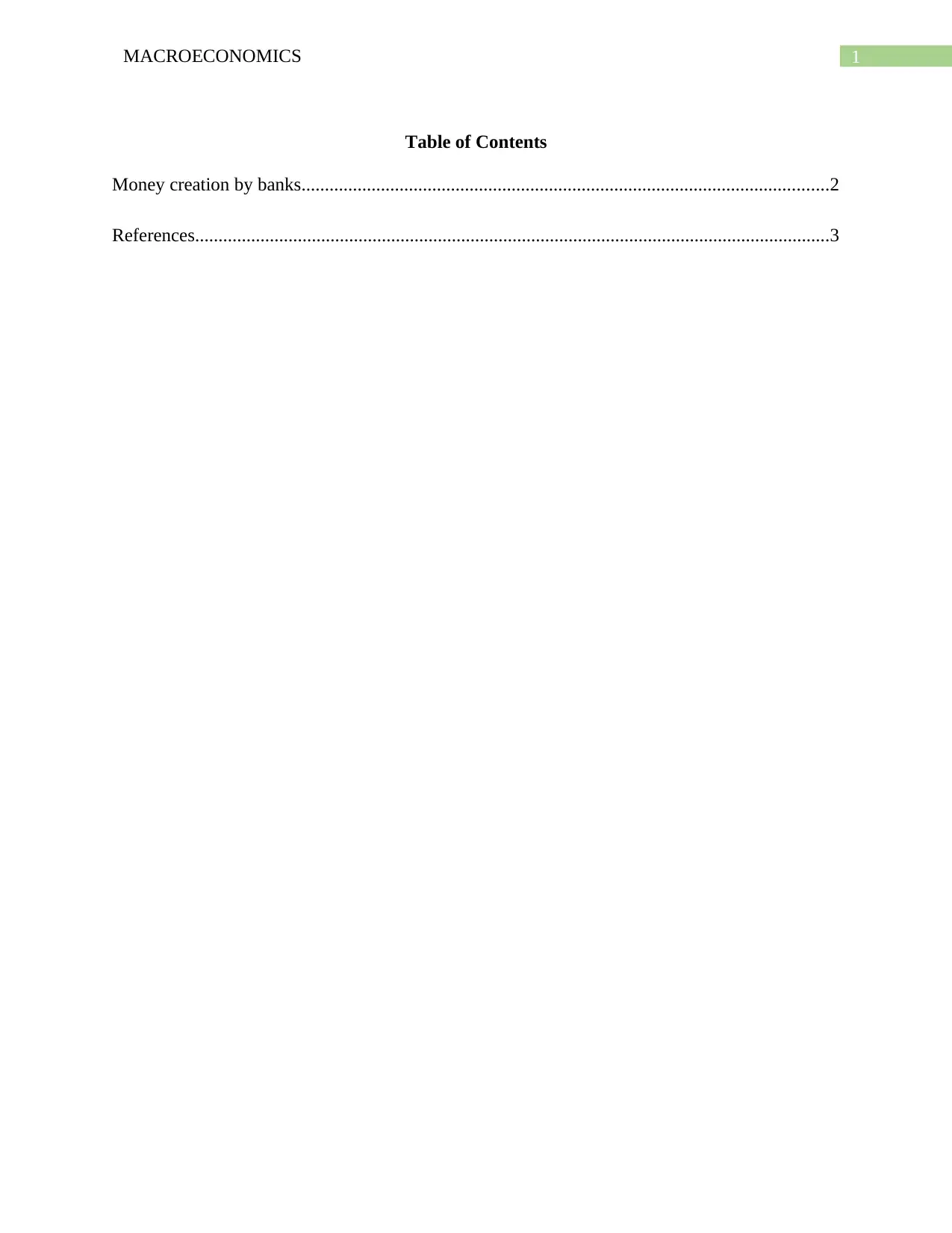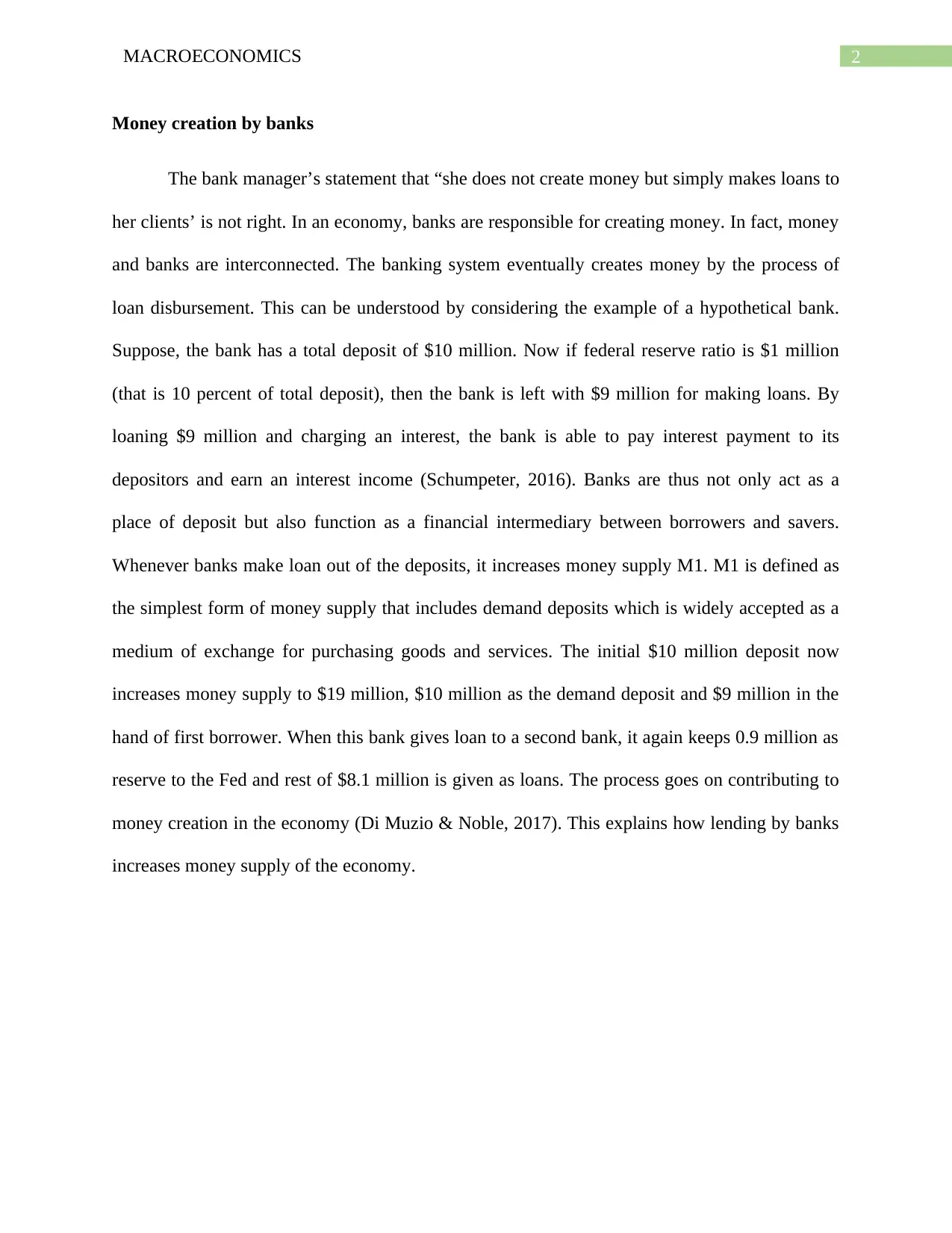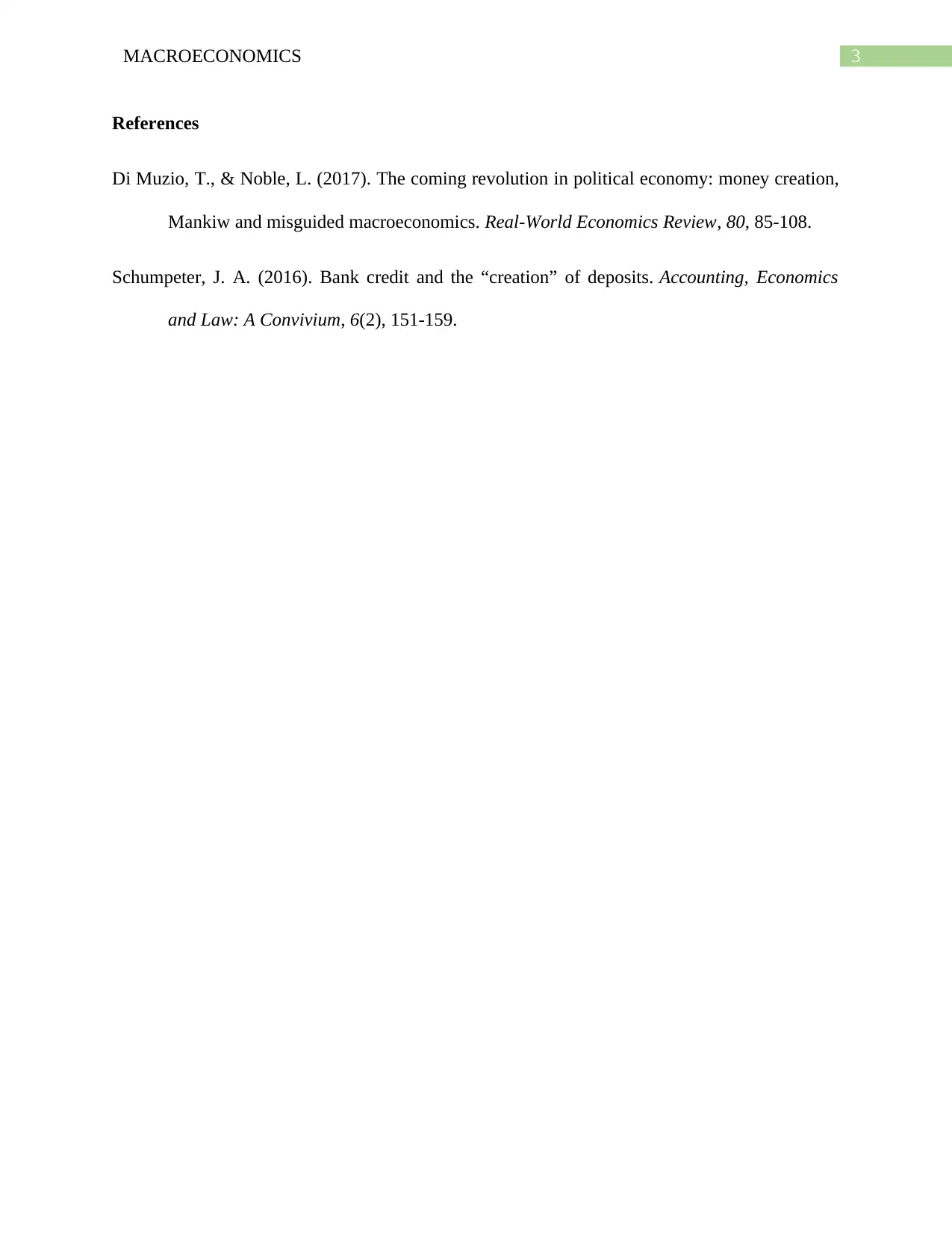Analysis of Money Creation by Banks: Macroeconomics Assignment
VerifiedAdded on 2022/12/15
|4
|418
|98
Homework Assignment
AI Summary
This assignment delves into the process of money creation by banks, a crucial concept in macroeconomics. It begins by challenging the common misconception that banks simply lend out deposits, instead emphasizing their role in actively creating money through the lending process. The assignment uses a hypothetical bank scenario to illustrate how initial deposits lead to increased money supply (M1) via loans, demand deposits, and the fractional reserve system. It explains how banks, acting as financial intermediaries, contribute to the expansion of the money supply. The assignment also highlights the role of the Federal Reserve and the impact of lending on the overall economy, citing relevant academic sources to support its analysis. The paper explains the process of money creation through loans and the impact on the economy.
1 out of 4











![[object Object]](/_next/static/media/star-bottom.7253800d.svg)